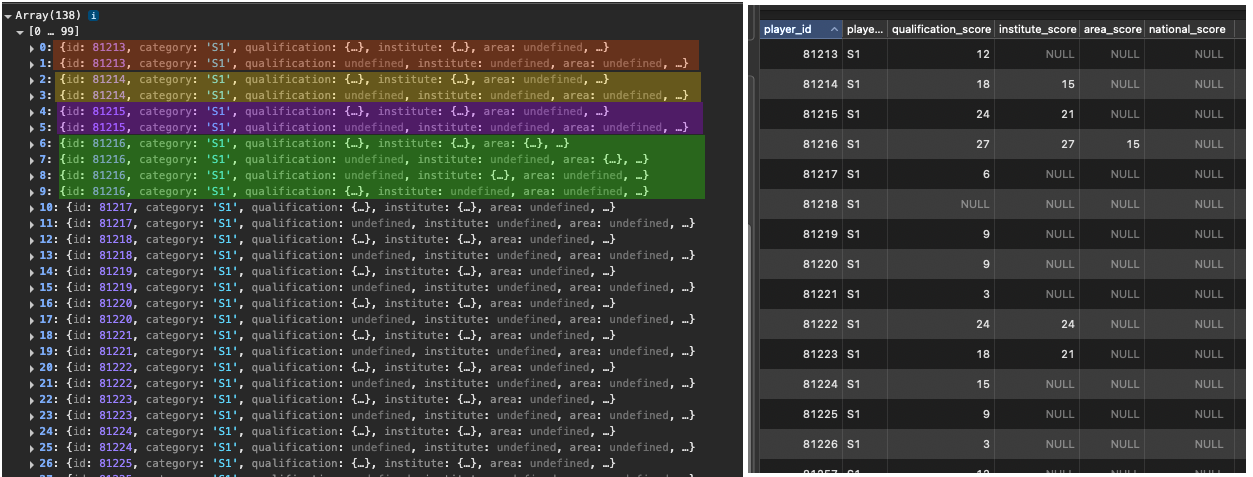Are `multiple joins` same as SQL multiple joins ?
I have an issue with multiple joins, I need some joins between a main table and other 4 tables but it seems that the output on TanStack DB is different from the same query on SQL.
These are my collection and SQL query:
TanStack DB Collection
SQL Query
I obtain from SQL 67 rows and 138 from the collection, where each row is duplicated a variable number of times (with missing part of relation).
How do
multiple joins really work here ?
7 Replies
deep-jade•4mo ago
This does indeed look wrong - joins are intended to follow sql semantics.
Could you file an issues with the schemas and query. We'll look into it asap.
yappiest-sapphireOP•4mo ago
ok now I create a sample, and open an issue
deep-jade•4mo ago
Thanks, can you confirm you would expect at most 1 row from the joined collections, and so there should only be 1 row out for every row in form the player collection?
yappiest-sapphireOP•4mo ago
yep, also uniqueBy(results, row => row.id) gives the same number of elements of the SQL query
deep-jade•4mo ago
Ok, thanks. We'll look at this as a priority in the next few days.
yappiest-sapphireOP•4mo ago
related issue: https://github.com/TanStack/db/issues/438
GitHub
Multiple joins not follow SQL semantics · Issue #438 · TanStack/db
I have an issue with multiple joins, I need some joins between a main table and other 4 tables but it seems that the output on TanStack DB is different from the same query on SQL. These are my coll...
deep-jade•4mo ago
We've tested with an older version of db from before we made a spesific change, and the results match SQLite. This means it's a regression that we had seen evidence of, but didn't have a perfect reproduction of. We are working on it right now and will have an update asap.